
 |
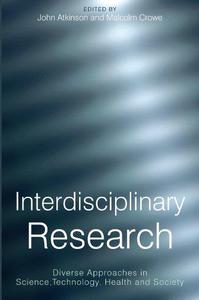 Interdisciplinary Research: Diverse Approaches in Science, Technology, Health and Society By John Atkinson, Malcolm Crowe (eds.) 2006 | 260 Pages | ISBN: 1861564708 | PDF | 2 MB An important book by researchers from across disciplines introducing varying ideas on research, important in these days of inter-disciplinary and multi-centered investigation. The book introduces academics to new areas of endeavour and encourages researchers and students to think broadly when devising their studies. Linking chapters present the contributions in an historical and theoretical context, identifying the themes between the approaches, and encourages new thinking about old problems. Includes contributions from leading researchers across the quantitative-qualitative spectrum, from marine biology to spirituality. With funding under increasing pressure, the different views will help departments form new alliances and encourage interdisciplinary working.Content: Chapter 1 Research Today (pages 1-23): Malcolm CroweChapter 2 Studying Complexity: Are We Approaching the Limits of Science? (pages 25-40): Ian BoydChapter 3 A Sustainable Environment? The 'Lopsided View' of an Environmental Geochemist (pages 41-54): Andrew S. HursthouseChapter 4 Use and Abuse of Statisticians (pages 55-74): Mario HairChapter 5 Research in Information Systems ? Mine and My Colleagues' (pages 75-99): Abel UsoroChapter 6 Hearing Lips and Seeing Voices: Illusion and Serendipity in Auditory?Visual Perception Research (pages 101-115): John MacDonaldChapter 7 Research in Modern History (pages 117-134): Martin MyantChapter 8 'Scientificity' and its Alternatives: Aspects of Philosophy and Methodology within Media and Cultural Studies Research (pages 135-154): Neil BlainChapter 9 The Truth as Personal Documentation: An Anthropological Narrative of Hospital Portering (pages 155-173): Nigel RapportChapter 10 Philosophy, Nursing and the Nature of Evidence (pages 175-190): P. Anne ScottChapter 11 Researching the Spiritual: Outcome or Process? (pages 191-212): Harriet Mowat and John SwintonChapter 12 Using Narrative in Care and Research: The Patient's Journey (pages 213-238): John Atkinson  Integrated Solid Waste Management: A Life Cycle Inventory, Second Edition By 2001 | 531 Pages | ISBN: 0632058897 | PDF | 9 MB The first edition described the concept of Integrated Waste Management (IWM), and the use of Life Cycle Inventory (LCI) to provide a way to assess the environmental and economic performance of solid waste systems. Actual examples of IWM systems and published accounts of LCI models for solid waste are now appearing in the literature. To draw out the lessons learned from these experiences a significant part of this 2nd edition focuses on case studies - both of IWM systems, and of where LCI has been used to assess such systems. The 2nd edition also includes updated chapters on waste generation, waste collection, central sorting, biological treatment, thermal treatment, landfill and materials recycling.This 2nd edition also provides a more user-friendly model (IWM-2) for waste managers. To make it more widely accessible, this edition provides the new tool in Windows format, with greatly improved input and output features, and the ability to compare different scenarios. A detailed user's guide is provided, to take the reader through the use of the IWM-2 model, step by step. IWM-2 is designed to be an "entry level" LCI model for solid waste - user-friendly and appropriate to users starting to apply life cycle thinking to waste systems - while more expert users will also find many of the advanced features of the IWM-2 model helpful. IWM-2 is delivered on CD inside the book.Content: Chapter 1 Introduction (pages 1-13): Chapter 2 Integrated Waste Management (pages 15-31): Chapter 3 The Development of Integrated Waste Management Systems: Case Studies and their Analysis (pages 33-83): Chapter 4 Life Cycle Assessment (pages 85-102): Chapter 5 A Life Cycle Inventory of Solid Waste (pages 103-127): Chapter 6 LCI Case Studies (pages 129-164): Chapter 7 The Overall Picture (pages 165-168): Chapter 8 Solid Waste Generation and Composition (pages 169-191): Chapter 9 Waste Collection (pages 193-226): Chapter 10 Central Sorting (pages 227-240): Chapter 11 Biological Treatment (pages 241-271): Chapter 12 Thermal Treatment (pages 273-396): Chapter 13 Landfilling (pages 297-309): Chapter 14 Materials Recycling (pages 311-324): Chapter 15 IWM?2: A Life Cycle Inventory Model for Integrated Waste Management (pages 325-332): Chapter 16 Waste Inputs (pages 333-338): Chapter 17 Waste Collection (pages 339-356): Chapter 18 MRF and RDF Sorting (pages 357-370): Chapter 19 Biological Treatment (pages 371-391): Chapter 20 Thermal Treatment (pages 393-410): Chapter 21 Landfilling (pages 411-430): Chapter 22 Materials Recycling (pages 431-456): Chapter 23 Advanced Variables (pages 457-470): Chapter 24 Waste System Flow (pages 471-472): Chapter 25 Streams Button (pages 473-474): Chapter 26 Results Button (pages 475-480): Chapter 27 Scenario Comparisons (pages 481-488): Chapter 28 What Parameters have Changed? (pages 489-490):
 Insects and Wildlife: Arthropods and their Relationships with Wild Vertebrate Animals By John L. Capinera(auth.) 2010 | 487 Pages | ISBN: 1444332996 | PDF | 67 MB Insects and Wildlife: Arthropods and their Relationships with Wild Vertebrate Animals provides a comprehensive overview of the interrelationships of insects and wildlife. It serves as an introduction to insects and other arthropods for wildlife management and other vertebrate biology students, and emphasizes the importance of insects to wild vertebrate animals. The book emphasizes how insects exert important influences on wildlife habitat suitability and wildlife population sustainability, including their direct and indirect effects on wildlife health. Among the important topics covered are: the importance of insects as food items for vertebrate animals; the role of arthropods as determinants of ecosystem health and productivity; the ability of arthropods to transmit disease-causing agents; an overview of representative disease-causing agents transmitted by arthropods; arthropods as pests and parasites of vertebrates; the hazards to wildlife associated with using using pesticides to protect against insect damage; insect management using techniques other than pesticides; the importance of insect conservation and how insects influence wildlife conservation. Content: Chapter 1 Insects and their Relatives (pages 1-33): Chapter 2 Structure and Function of Insects (pages 34-81): Chapter 3 Food Resources for Wildlife (pages 83-104): Chapter 4 Wildlife Diets (pages 105-170): Chapter 5 Insects Important as Food for Wildlife (pages 171-197): Chapter 6 Insects and Ecosystems (pages 198-229): Chapter 7 Transmission of Disease Agents to Wildlife by Arthropods (pages 231-244): Chapter 8 Infectious Disease Agents Transmitted to Wildlife by Arthropods (pages 245-262): Chapter 9 Parasitic Disease Agents Transmitted to Wildlife by Arthropods (pages 263-284): Chapter 10 Arthropods as Parasites of Wildlife (pages 285-337): Chapter 11 Pesticides and their Effects on Wildlife (pages 339-365): Chapter 12 Alternatives to Insecticides (pages 366-383): Chapter 13 Insect-Wildlife Relationships (pages 385-409): Chapter 14 Insect and Wildlife Conservation (pages 410-436): 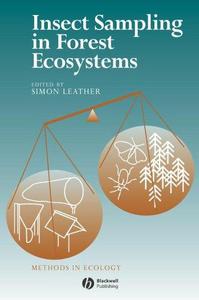 Insect Sampling in Forest Ecosystems By 2004 | 315 Pages | ISBN: 0632053887 | PDF | 3 MB Insect Sampling in Forest Ecosystems highlights the problems faced by entomologists working in forest ecosystems.Insects play a major part in all aspects of ecology Brings together the methodology needed to investigate insects through the various strata of the forest canopy Covers techniques associated with various specialised groups of forest insects Each chapter is backed up by a sound approach to experimental design and data analysis Essential reading for advanced students and researchers as well as teachersContent: Chapter 1 Sampling Theory and Practice (pages 1-15): Simon R. Leather and Allan D. WattChapter 2 Sampling Insects from Roots (pages 16-36): Alan C. GangeChapter 3 Pitfall Trapping in Ecological Studies (pages 37-57): B. A. WoodcockChapter 4 Sampling Methods for Forest Understory Vegetation (pages 58-76): Claire M. P. OzanneChapter 5 Sampling Insects from Trees: Shoots, Stems, and Trunks (pages 77-115): Martin R. SpeightChapter 6 Insects in Flight (pages 116-145): Mark YoungChapter 7 Techniques and Methods for Sampling Canopy Insects (pages 146-167): Claire M. P. OzanneChapter 8 Sampling Methods for Water?Filled Tree Holes and Their Artificial Analogues (pages 168-185): S. P. Yanoviak and O. M. FinckeChapter 9 Sampling Devices and Sampling Design for Aquatic Insects (pages 186-220): Leon Blaustein and Matthew SpencerChapter 10 Methods for Sampling Termites (pages 221-253): David T. Jones, Robert H. J. Verkerk and Paul EggletonChapter 11 Parasitoids and Predators (pages 254-278): Nick Mills 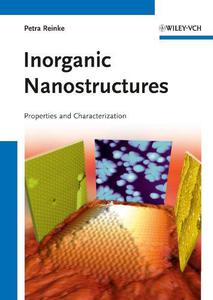 Inorganic Nanostructures: Properties and Characterization By Prof. Petra Reinke(auth.) 2012 | 199 Pages | ISBN: 3527409254 | PDF | 3 MB This monograph for young researchers and professionals looking for a comprehensive reference offers an advanced treatment of the topic that extends beyond an introductory work. As such, it systematically covers the inorganic nanostructures in the breadth needed, while presenting them together with the surface science tools used to characterize them, such as electron spectroscopy and scanning probe techniques. The unique challenges in the fabrication of nanostructures are illustrated, and set into context of controlling structure, dimensionality and electronic properties.  Innovation Engine: Driving Execution for Breakthrough Results By Jatin Desai(auth.) 2013 | 235 Pages | ISBN: 1118355032 | PDF | 2 MB How to implement an innovation engine in any organizationInnovation is often sought and is in high demand today. At the same time it is often misunderstood and lacks committed sponsorship. Today, most teams at the top need an innovation capability in a manner that works in tandem with their performance/operations management. Packed with actionable ideas, references, links, and resources, Innovation Engine meets that need. Reveals how to develop strategy, road maps, and processes for innovation execution Provides high level implementation guidance on executing innovation, something companies are struggling with globally Explores how today's companies can create a long-term sustainable corporate culture by also using an innovation engine Explains how to use innovation to keep employees engaged and motivated Written for executives, business leaders, CFOs, and CIOs Showing readers how to create a business case for innovation and a supporting innovation linked to business vision and goals, Innovation Engine clearly reveals how to reduce time-to-market, while expanding the "idea landscape" and building a pipeline of corporate innovators. Content: Chapter 1 Develop a Clear Innovation Intent (pages 9-35): Chapter 2 Assess Innovation Readiness (pages 37-55): Chapter 3 Creating an Innovation Strategy (pages 57-72): Chapter 4 Creating a Roadmap (pages 73-91): Chapter 5 Building Momentum (pages 93-109): Chapter 6 Structuring for Innovation (pages 111-131): Chapter 7 Innovation Management Process (pages 133-159): Chapter 8 Building Intrapreneurs (pages 161-189): Chapter 9 Sourcing Radical Ideas (pages 191-211): Chapter 10 The One Secret about Innovation (pages 213-228):
 Inflation-indexed Securities: Bonds, Swaps and Other Derivatives, Second Edition By Mark Deacon, Andrew Derry, Dariush Mirfendereski(auth.) 2004 | 353 Pages | ISBN: 0470868120 | PDF | 5 MB The global market for inflation-indexed securities has ballooned in recent years, and this trend is set to continue. This book examines the rationale behind issuance and investment decisions, and details the issues facing anyone who designs indexed securities, illustrating them wherever possible with actual examples from the international capital markets. In particular, an extensive review of indexed debt markets throughout the world is provided - including for the first time, a comprehensive and consistent set of cash flow and price-yield equations for the instruments already in existence in the major bond markets - forming an important reference for those already experienced in the field, as well as practitioners and academics approaching the subject for the first time. The book also provides unique insight into the development of inflation-indexed derivative products, and the analytical tools required to value such instruments.Content: Chapter 1 What are Inflation?indexed Securities and Derivatives? (pages 1-8): Chapter 2 Security Design (pages 9-42): Chapter 3 Why Invest in Indexed Debt? (pages 43-58): Chapter 4 Why Issue Indexed Bonds? (pages 59-71): Chapter 5 Inflation and Real Interest Rate Analysis (pages 73-92): Chapter 6 Major International Indexed Bond Markets (pages 93-178): Chapter 7 Other Indexed Bond Markets (pages 179-233): Chapter 8 Inflation?linked Derivatives: Market Description (pages 235-267): Chapter 9 Inflation?linked Derivatives: Pricing, Hedging and Other Technical Aspects (pages 269-296): Chapter 10 Conclusion (pages 297-300): 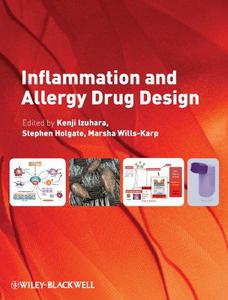 Inflammation and Allergy Drug Design By 2011 | 326 Pages | ISBN: 1444330144 | PDF | 10 MB Our knowledge and understanding of allergic diseases of the respiratory tract has improved to a point where new therapies are being developed for patient benefit.Inflammation and Allergy Drug Design explains the biologic science that underpins the pathophysiology of asthma and related disorders, as well as their mechanisms. This authoritative guide consists of 25 chapters, each detailing the cutting-edge developments in a particular field. It is divided into three parts, covering cytokines, chemokines, grow factors and mediators. This book allows immunologists, allergologists and researchers in the pharmaceutical industry to learn and appreciate the target biology in drug development. It also provides medical and pharmaceutical postgraduatestudents and clinicians with a basic understanding of allergic diseases in the respiratory tract.Content: Chapter 1 Novel Anti?Inflammatory Drugs Based on Targeting Lung Dendritic Cells and Airway Epithelial Cells (pages 1-14): Bart N. Lambrecht, Maud Plantinga, Monique Willart and Hamida HammadChapter 2 Role of Th2 Cells in the Allergic Diathesis (pages 15-25): Marsha Wills?karpChapter 3 Importance of Th17? and Th1?Associated Responses for the Development of Asthma (pages 27-38): Tomohiro Yoshimoto, Hiroko Tsutsui and Kenji NakanishiChapter 4 Regulatory T Cells (pages 39-57): Chris Corrigan and Kimuli RyannaChapter 5 A Role for Natural Killer T?Cell Subsets in the Pathogenesis of Various Allergic Disorders (pages 59-66): Hiroshi Watarai, Michishige Harada, Mayumi Tamari and Masaru TaniguchiChapter 6 Regulatory Roles of B Cells in Allergy and Inflammation (pages 67-77): Kiyoshi Takatsu, Masashi Ikutani and Yoshinori NagaiChapter 7 Mast Cells (pages 79-105): Mindy Tsai and Stephen J. GalliChapter 8 Eosinophils (pages 107-121): Nancy A. Lee, Mark V. Dahl, Elizabeth A. Jacobsen and Sergei I. OchkurChapter 9 Basophils in Inflammation and Allergy Drug Design (pages 123-137): Donald MacGlashanChapter 10 Epithelial Cells (pages 139-148): Tillie?Louise Hackett, Stephanie Warner, Dorota Stefanowicz and Darryl KnightChapter 11 Fibroblasts (pages 149-162): Alastair G. Stewart, Lilian Soon and Michael SchuligaChapter 12 Airway Smooth Muscle Cells (pages 163-171): Andrew J. Halayko and Pawan SharmaChapter 13 Interleukin 4, Interleukin 13, and Interleukin 9 (pages 173-185): Kenji Izuhara, Shoichiro Ohta, Hiroshi Shiraishi and Shoichi SuzukiChapter 14 Interleukin 3, Interleukin 5, and Granulocyte-Macrophage Colony?Stimulating Factor (pages 187-196): Alba Llop?Guevara, Josip Marcinko, Ramzi Fattouh and Manel JordanaChapter 15 Interleukin 15, Interleukin 17, and Interleukin 25 (pages 197-204): Hiroshi Nakajima and Itsuo IwamotoChapter 16 Thymic Stromal Lymphopoietin (pages 205-214): Kazuhiko Arima and Yong?Jun LiuChapter 17 Interleukin 10 (pages 215-224): Whitney W. Stevens, Larry Borish and John W. SteinkeChapter 18 Tumor Necrosis Factor Alpha (pages 225-235): Christopher Brightling, Latifa Chachi, Dhan Desai and Yassine AmraniChapter 19 Profibrotic and Angiogenic Factors in Asthma (pages 237-252): Neville Berkman and Francesca Levi?SchafferChapter 20 Chemokines (pages 253-261): Luis M. Teran and Juan R. VelazquezChapter 21 Epithelial Growth Factors (pages 263-270): Yasuhiro Gon and Shu HashimotoChapter 22 Prostanoids (pages 271-283): Sarah A. Maher, Deborah L. Clarke and Maria G. BelvisiChapter 23 Leukotrienes (pages 285-295): Katsuhide Okunishi and Marc Peters?GoldenChapter 24 Proteases in Allergy (pages 297-305): Keisuke Oboki and Hirohisa SaitoChapter 25 Toll?Like Receptors (pages 307-316): Jessica L. Allen, Aurelien Trompette and Christopher L. Karp 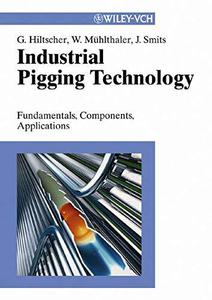 Industrial Pigging Technology: Fundamentals, Components, Applications By Prof. Dr.?Ing. Gerhard Hiltscher, Dipl.?Ing. Wolfgang Muhlthaler, Dipl.?Ing. Jorg Smits(auth.) 2003 | 333 Pages | ISBN: 3527306358 | PDF | 5 MB Pigs are snug-fitting plugs which are able to perform various maintenance tasks such as cleaning or removing deposits or blockages in pipe and pipeline systems from the inside. A gaseous or liquid propellant is used to push the pig through the system. This strategy avoids rinsing loss of valuable product, provides reduction of adverse environmental impacts, and gains high efficiency for less investment. The book describes clearly and methodically the important basic equipment required for the planning and design of pigging units. Many practical examples are shown for the operation of industrial pigging units, drawn from the authors' longtime experience in this technology. In this form and scope the book is an unrivaled presentation of this technology. Engineers and chemists who plan, construct, operate and maintain production plants in the chemical, food, cosmetics, pharmaceutical and petrochemical industry will find an invaluable source of advice and reference for pigging units. Content: Chapter 1 Introduction to Pigging Technology (pages 1-7): Chapter 2 Pigging Units and Pigging Systems (pages 9-20): Chapter 3 Pigs (pages 21-47): Chapter 4 Valves (pages 49-74): Chapter 5 Pipework (pages 75-97): Chapter 6 Additional Equipment (pages 99-103): Chapter 7 Propellants (pages 105-112): Chapter 8 Control System (pages 113-137): Chapter 9 Decision Criteria for Pigging (pages 139-152): Chapter 10 Cleaning Degree after Pigging (pages 153-172): Chapter 11 Pig Wear (pages 173-180): Chapter 12 Medium?Specific Characteristics (pages 181-187): Chapter 13 Checks before Start?up (pages 189-195): Chapter 14 Experiences with Pigging Units (pages 197-204): Chapter 15 Applications in the Chemical Industry (pages 205-223): Chapter 16 Pigging Units for Sterile Technology (pages 225-236): Chapter 17 Pipeline Pigging (pages 237-257): Chapter 18 Pigging of Pneumatic Conveying Lines for Bulk Materials (pages 259-271): Chapter 19 Legal Requirements (pages 273-278): Chapter 20 Safety and Occupation Health (pages 279-294):
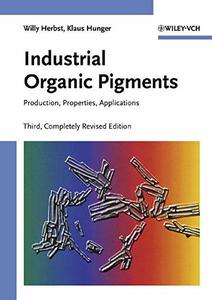 Industrial Organic Pigments: Production, Properties, Applications, Third Edition By Dr. Willy Herbst, Dr. Klaus Hunger, Gerhard Wilker, Heinfred Ohleier, Rainer Winter(auth.) 2004 | 672 Pages | ISBN: 3527305769 | PDF | 7 MB "Everything there is to know about organic pigments"Revised and updated, this highly acclaimed work, now in its third edition, remains the most comprehensive source of information available on synthetic organic pigments. The book provides up-to-date information on synthesis, reaction mechanisms, physical and chemical properties, test methods, and applications of all industrially produced organic pigments on the world market. Standardized methods have been used to obtain the data, thus facilitating comparison between pigments, making this an invaluable book for chemists, engineers, colorists, and technicians. "Presentation throughout is of the highest quality and the volume must now become the standard reference text in this important area of colouring matters." -Dyes and Pigments"This is a very wide-ranging reference work ... it would be difficult to find a topic in this field not covered by this book." -EcochemContent: Chapter 1 General (pages 1-181): Chapter 2 Azo Pigments (pages 183-419): Chapter 3 Polycyclic Pigments (pages 421-566): Chapter 4 Miscellaneous Pigments (pages 567-583): Chapter 5 Legislation, Ecology, Toxicology (pages 585-599): |